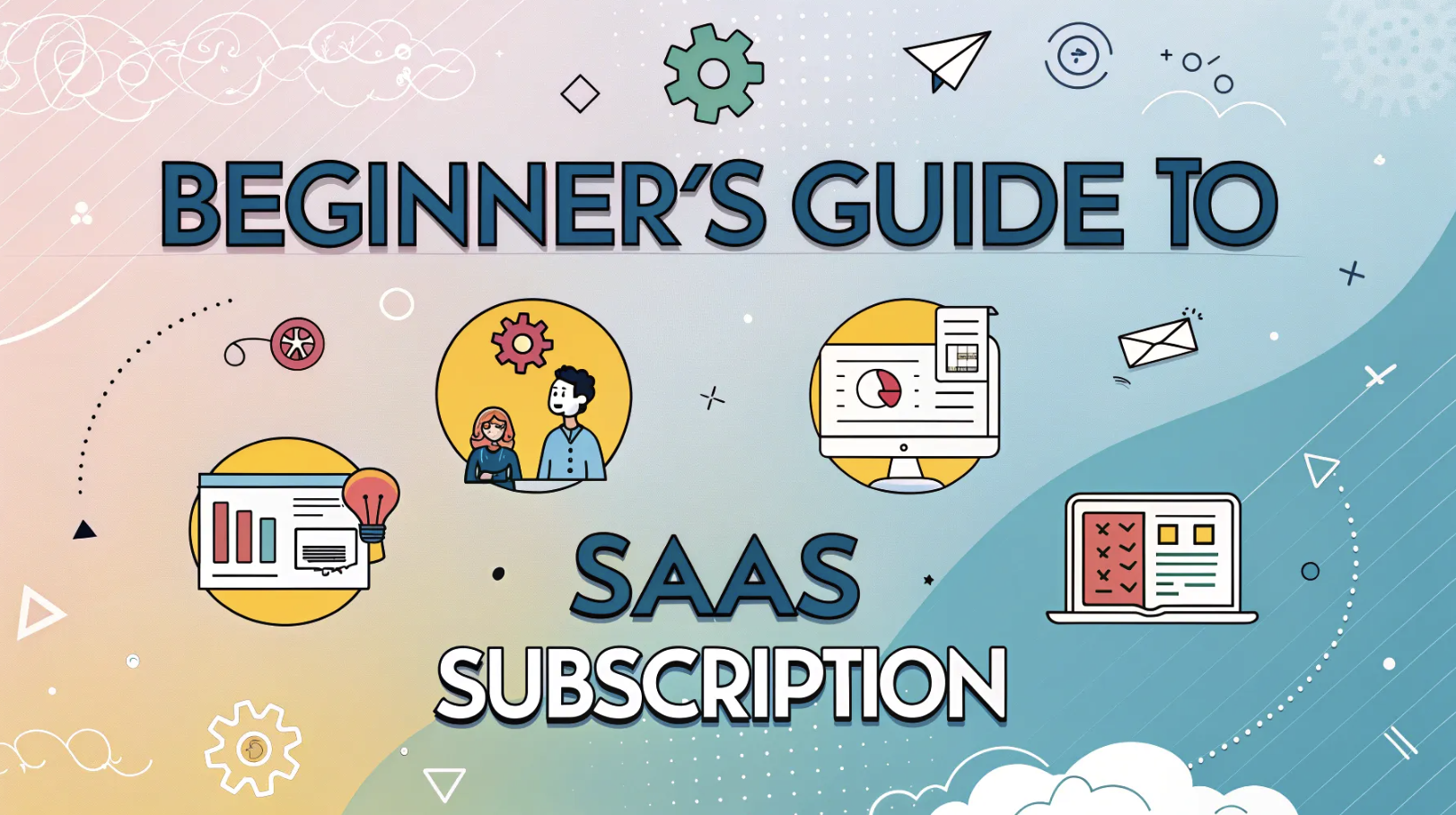
SaaS subscriptions have transformed how we access and use software. Instead of purchasing expensive licenses, we can now subscribe to cloud-based solutions tailored to our needs. This shift has empowered both businesses and individuals. For instance, enterprises now manage an average of 275 SaaS applications, while IT departments oversee only 26% of the spending. Such a decentralized approach offers more control but also requires better management.
However, efficient subscription management is mandatory. Without it, costs can spiral out of control. Through effective practices, one startup reduced its SaaS spending by 25% in just a year.
Imagine the potential savings and productivity you could unlock by taking charge of your subscriptions today. 💰
Key Takeaways
-
SaaS subscriptions let you use software online without buying it. This saves money and gives you more options.
-
Check your subscriptions often to find software you don’t use. This saves money and helps you work better.
-
Keep all your subscriptions in one place to stay organized. This makes renewals easier and avoids confusion.
-
Talk to vendors to get lower prices. Knowing how you use the software can help you get discounts.
-
Use tools to track and manage subscriptions automatically. This avoids mistakes and saves time so you can focus on your work.
What Are SaaS Subscriptions?
Definition of SaaS subscriptions
SaaS subscriptions are a modern way to access software. Instead of purchasing a one-time license, you pay a recurring fee to use cloud-based applications. This model allows you to “rent” software hosted online, eliminating the need for local installations. Subscriptions can be billed monthly, quarterly, or annually, depending on your needs. Popular examples include tools like Google Workspace, Slack, and Salesforce.
Understanding the subscription terms is essential. SaaS providers often offer flexible plans, such as pay-as-you-go or fixed pricing. Evaluating cancellation policies and vendor flexibility ensures you avoid unnecessary costs while meeting your operational goals.
Benefits of SaaS subscriptions
SaaS subscriptions offer numerous advantages that can transform how you use software:
-
Cost savings: SaaS eliminates the need for expensive hardware and maintenance. Over five years, businesses can save up to $132,000 compared to traditional IT systems.
-
Scalability: You can easily scale services up or down based on your needs, paying only for what you use.
-
Flexibility: SaaS solutions provide transparent pricing and allow you to switch plans as your requirements evolve.
-
Enhanced productivity: Cloud-based access ensures your team can work from anywhere, boosting collaboration and efficiency.
-
Improved security: SaaS providers invest heavily in security measures, protecting your data better than most in-house systems.
These benefits make SaaS subscriptions a game-changer for businesses of all sizes.
How SaaS subscriptions work
SaaS subscriptions operate on a recurring payment model, offering access to software through the internet. The process involves several stages:
-
Customer acquisition: Providers attract new users through free trials or freemium plans.
-
Onboarding: A smooth onboarding experience ensures you quickly adopt the software and see its value.
-
Usage and scaling: As your needs grow, you can upgrade to higher tiers or add more users.
-
Renewals: Retaining customers is crucial for SaaS providers, so they focus on delivering consistent value.
Different subscription models cater to diverse needs. For example:
|
Subscription Model |
Benefits |
Considerations |
|---|---|---|
|
Flat-rate Pricing |
Simple to understand, predictable revenue forecasting |
May not capture full value for larger customers |
|
Tiered Pricing |
Offers flexibility, facilitates upselling, creates perceived value ladder |
Requires careful management, can lead to decision paralysis |
|
Freemium + Premium |
Lowers entry barriers, allows testing before commitment |
Needs a clear upgrade path, balancing costs of free users |
|
Pay-per-Seat |
Scales with customer growth, clear value tied to usage |
Can be expensive for larger teams, may need additional management features |
The SaaS subscription is more than just a transaction. It’s a continuous process that affects your experience and success, from the first interaction to the renewals.

Why SaaS Subscription Management Matters
Efficient SaaS subscription management is more than just a good practice—it’s necessary. With the growing reliance on subscription-based software, managing your subscriptions effectively can unlock significant benefits for your business. Let’s explore why this matters.
Cost optimization
Managing your SaaS subscriptions helps you take control of your spending. Without proper oversight, costs can quickly spiral due to unused or redundant software. Studies show that SaaS spend management allows businesses to see, control, and optimize their subscriptions. For example:
-
Understand your current SaaS spend and compare it to actual usage.
-
Identify overlapping tools with similar functionalities to consolidate them.
-
Set budget controls to prevent overspending and forecast future needs.
Analyzing your SaaS costs allows you to align your subscriptions with your business goals. This approach saves money and ensures you get the most value from your investment. Companies that actively manage their SaaS subscriptions can save up to 20% on expenses.
Avoiding inefficiencies
Inefficiencies in SaaS management can drain your resources and productivity. Regular audits of your subscriptions can reveal unused software, helping you eliminate waste. Many businesses also fail to utilize all the features of their tools, missing out on potential value. For instance:
|
Practice |
Description |
|---|---|
|
Conduct Regular Audits |
Identify unused software and reduce unnecessary costs. |
|
Utilize Subscription Features |
Maximize the value of your tools by exploring all available features. |
|
Negotiate Rates |
Secure better pricing by negotiating with providers before renewing contracts. |
|
Automate Processes |
Save time and reduce errors by automating subscription management tasks. |
These steps ensure your SaaS subscriptions work for you, not against you. This proactive approach boosts efficiency and keeps your operations running smoothly.
Enhancing security and compliance
SaaS subscription management also plays a critical role in protecting your business. Poorly managed subscriptions can lead to security vulnerabilities and compliance risks. For example, 39% of companies experienced a data breach last year, often due to inadequate SaaS oversight. To enhance security, you should:
-
Manage offboarding processes to revoke access for former employees.
-
Automate deprovisioning and archive user data securely.
-
Enforce security policies like multi-factor authentication across all tools.
Compliance with standards such as GDPR or HIPAA is essential to avoid fines and reputational damage. Effective SaaS management ensures your software meets these requirements, safeguarding your business from unnecessary risks.
Taking control of your SaaS subscriptions isn’t just about saving money—it’s about creating a secure, efficient, and future-ready business environment.
Challenges in Managing SaaS Subscriptions
Managing SaaS subscriptions can feel overwhelming, especially when hidden costs, complexity, and security risks come into play. Understanding these challenges is the first step toward overcoming them.
Hidden costs and overspending
Hidden costs are one of the most common pitfalls of SaaS subscriptions. You might think you’re paying only for what you use, but unused licenses and redundant tools can quietly drain your budget. Studies reveal that nearly 33% of SaaS spending is wasted due to underutilization.
For example, the average company holds $135,000 worth of unused software licenses annually. Overspending on features you don’t need can add another 20% to your expenses.
|
Financial Impact of Poor SaaS Management |
Data |
|---|---|
|
SaaS Spending Waste |
33% of spending wasted due to underutilization |
|
Unused Licenses |
$135,000 worth of unused licenses annually |
|
Overspending on Features |
20% overspend due to over-purchasing |
|
Potential Savings |
Enterprises could reduce SaaS spend by up to 30% |
To avoid these hidden costs, you need to regularly audit your subscriptions and eliminate waste. This proactive approach can save you thousands of dollars annually.
Complexity of managing multiple subscriptions
As your organization grows, managing multiple SaaS subscriptions becomes increasingly complex. New software is introduced frequently, leading to fragmented processes. Different departments may adopt their own tools, creating confusion and redundancy. E.g. overlapping features between applications can result in unnecessary costs and inefficiencies.
The lack of a centralized system makes tracking usage, payments, and renewals harder. Billing complications, such as unexpected charges, can further complicate matters. Understanding the total cost of your software subscriptions becomes daunting without proper management. Simplifying this complexity requires a centralized inventory and clear communication across teams.
Security risks and compliance issues
Poorly managed SaaS subscriptions can expose your business to significant security risks. Shadow IT, where employees use unauthorized tools, often bypasses IT oversight. This lack of visibility prevents you from enforcing security policies, increasing the risk of data breaches.
Organizations spend an average of $3,500 per employee on SaaS tools, yet many fail to secure these investments properly.
Compliance is another critical concern. Failing to meet standards like GDPR or HIPAA can lead to hefty fines and reputational damage. Centralizing governance and using a SaaS management platform can mitigate these risks. These tools enhance visibility, enforce security measures, and ensure compliance with procurement policies.
Taking control of these challenges empowers you to optimize your SaaS subscriptions, protect your business, and unlock greater value.
Lack of visibility into usage and ROI
When you lose track of how your SaaS subscriptions are being used, measuring their return on investment (ROI) becomes nearly impossible. This lack of visibility can lead to wasted resources, missed opportunities, and poor decision-making. Without clear insights, you might continue paying for software that no longer serves your needs or fails to deliver value.
The numbers tell a concerning story. On average, only 49% of SaaS licenses are actively used, while 51% remain untouched. This means over half of your software investments could be going to waste. This inefficiency can result in flat or even negative growth for businesses relying on SaaS tools.
5.3% of SaaS companies reported no growth in 2023, highlighting the impact of poor subscription management.
|
Statistic Description |
Value |
Year |
|---|---|---|
|
Percentage of SaaS companies reporting flat or negative growth |
5.3% |
2023 |
|
Percentage of SaaS licenses used |
49% |
2024 |
|
Percentage of unused SaaS licenses |
51% |
2024 |
|
Percentage of SaaS licenses that go unused |
53% |
N/A |
To overcome this challenge, you need to take control of your software usage. Start by centralizing your subscription data. This allows you to monitor which tools are being used and by whom. Regular audits can help you identify underutilized software and eliminate waste.
Tracking usage also enables you to measure ROI more effectively, ensuring every dollar spent on SaaS contributes to your goals.
You unlock the potential for smarter decisions and greater efficiency when you gain visibility into your SaaS ecosystem. You can reallocate resources to high-performing tools, negotiate better deals with vendors, and ensure your software investments drive meaningful results. Don’t let hidden inefficiencies hold you back—take charge of your subscriptions today.
Tools for SaaS Subscription Management
Efficiently managing your SaaS subscriptions starts with choosing the right tools. Subscription management software simplifies the process, helping you save time, reduce costs, and optimize your software ecosystem.
Let’s check out the top platforms, key features to look for, and how to select the best tool for your needs.
Top subscription management platforms
The market offers several subscription management systems designed to streamline your SaaS management. Each platform brings unique features to the table, catering to different business needs.
Here are some of the top-rated options:
|
Platform |
Key Features |
Customer Rating (Capterra) |
|
|---|---|---|---|
|
sticky.io |
Flexible billing models, advanced customer retention tools, PCI-DSS compliance |
4.5/5 |
4/5 |
|
Maxio |
Automated billing processes, revenue recognition, scalability for growth |
4.5/5 |
4.6/5 |
|
Billsby |
Centralized subscription management, automated billing, subscription analytics |
4.8/5 |
5/5 |
|
FastSpring |
Flexible subscription models, global payment support, secure data handling |
4.5/5 |
4.4/5 |
|
Chargebee |
Automated billing, flexible subscription plans, revenue recognition |
4.4/5 |
4.4/5 |
|
Spendesk |
Centralized oversight, automated expense tracking, budget allocation |
4.7/5 |
4.8/5 |
These platforms excel in areas like billing automation, customer retention, and security. For example, sticky.io focuses on advanced retention tools, while Billsby offers robust analytics for subscription-based pricing models.
Key features to consider
When evaluating subscription software, focus on features that align with your business goals. The right tool should simplify your SaaS management while maximizing efficiency. Here are the key features to prioritize:
-
Subscription models and terms: Ensure the platform supports flexible subscription-based pricing options.
-
User roles and access levels: Look for tools that allow you to manage permissions effectively.
-
Usage tracking and analytics: Choose software that provides insights into SaaS usage and ROI.
-
Procurement and renewal processes: Streamlined workflows save time and reduce errors.
-
Integration capabilities: The tool should integrate seamlessly with your existing software stack.
These features empower you to optimize your software subscriptions, eliminate waste, and enhance security. For example, platforms like Maxio and Chargebee excel in revenue recognition and billing automation, making them ideal for scaling businesses.
Choosing the right tool for your needs
Selecting the best subscription management software requires a clear understanding of your business requirements. Follow these steps to make an informed decision:
-
Identify your specific needs: Assess your current SaaS subscriptions and future growth plans.
-
Translate needs into features: Match your requirements with the features offered by various platforms.
-
Evaluate integrations: Ensure the tool integrates with your existing software ecosystem.
-
Consider scalability: Choose a platform that can grow with your business.
For example, if your focus is on optimizing billing and collections, tools like FastSpring or Chargebee might be ideal. If you need advanced analytics, Billsby could be the perfect fit. Taking the time to evaluate your options ensures you invest in a solution that delivers long-term value.
Efficiently managing your saas subscription ecosystem is not just about saving money—it’s about empowering your business to thrive. When you take control of your subscriptions, you unlock opportunities for growth, security, and streamlined operations. Regular audits, centralized management, and usage tracking ensure every tool you use aligns with your goals.
Here’s a quick summary of actionable steps to get started:
-
Audit your subscriptions to uncover underutilized tools and justify renewals.
-
Centralize your inventory to reduce hidden costs and improve compliance.
-
Monitor usage patterns to eliminate waste and make data-driven decisions.
|
Actionable Step |
Benefit |
|---|---|
|
Regular Audits |
Identify underutilized applications and reallocate resources effectively. |
|
Centralized Management |
Mitigate shadow IT and ensure compliance, reducing hidden costs. |
|
Usage Monitoring |
Track user activity to align tools with business goals. |
|
Vendor Management |
Negotiate better deals and terms during contract renewals. |
You have the tools and strategies to take charge of your saas environment. Start today, and watch your business become more efficient, secure, and cost-effective.



